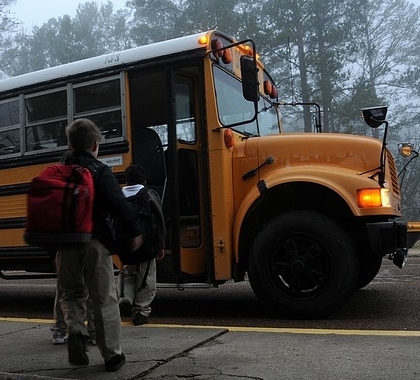St. Louis Microcosm
The percentage of Catholics among the students in the Catholic schools in the Archdiocese of St. Louis, Missouri has declined steadily during the past decade, but the decrease has been offset by an increase in non-Catholic students.
“Even as Catholic schools in the 11 counties of the St. Louis Archdiocese have lost 22 percent of their Catholic students, they have seen a 23 percent spike in non-Catholic enrollment,” the St. Louis Post-Dispatch reported in January.
Most Holy Trinity Catholic School and Academy in St. Louis’ Hyde Park neighborhood has achieved remarkable success by catering “to the largely low-income, African-American and non-Catholic population in the surrounding, impoverished neighborhood,” the Post-Dispatch reported. “Most Holy Trinity has seen a 25 percent increase in enrollment in the past three years,” and just one of the school’s students is Catholic.
The Archdiocese of St. Louis offers a host of financial aid options and scholarships to assist low-income families.
National Trend
The changing student cohort in St. Louis represents a growing national trend, says Heather Gossart, senior consultant and director of executive mentoring and coaching at the National Catholic Education Association.
“In 1970, only 2.7 percent of our students in Catholic schools were non-Catholic,” Gossart said. “Today, we know that between 18 and 19 percent are non-Catholic. In the inner-cities and very urban schools, there may be 70–80 percent non-Catholic [students].”
Says Parents Want Values
Gossart says the Catholic school environment appeals to people of varying faiths.
“Regardless of what faith parents profess, they want their children to be in an environment where there is a moral compass,” Gossart said. “They want to feel that their children are taught values. They want their children in environments where social justice and morality and faith-based decision-making are a part of their lives.”
Gossart says Catholic schools offer a more positive learning environment than many public schools.
“[Parents] also realistically gravitate toward us for safety,” Gossart said. “Catholic schools are seen as safe environments. They’re also seen as inclusive environments, where a young person doesn’t have to be a particular persona to be welcomed into the community.
“They also see the statistical data that we know,” Gossart said. “The average child that goes to Catholic school is going to have a 98–99 percent chance of graduating from high school and an 80–90 percent chance to go on to postsecondary education. There are a lot of things that bring parents to Catholic schools.”
Alumni Give Back
Gossart says Catholic schools operate efficiently and develop loyal and generous benefactors.
“We’re doing it on budgets that are sometimes as low as one-third as much as it’s costing the public schools to educate,” Gossart said. “Most of our Catholic schools do not have the bureaucracy that comes with the public-sector schools. We also know that many of our elementary schools are attached to parishes, and the parishes have a generosity toward supporting them. There is a great loyalty amongst alumni from many of our Catholic institutions, so more and more, the alumni of Catholic high schools and elementary schools turn around and give back to the schools.”
‘At-Risk Students Thriving’
Dan Guernsey, director of K–12 programing for the Cardinal Newman Society, says the methods Most Holy Trinity is using have far-reaching benefits.
“Anywhere we see at-risk students thriving, it’s good,” Guernsey said. “It’s good for the students, and it’s good for the world, and if it’s good for the students and good for the world, it’s good for the Church. That is a very rewarding and important activity, and that needs to be encouraged and expanded.”
Maintaining a Catholic Identity
Guernsey says in working to attract non-Catholic students, it’s important schools don’t lose sight of their primary mission.
“Often, Catholic schools will down-sell their Catholic identity so as not to have customers go away,” Guernsey said. “I want to make sure that we’re big enough and bold enough in our service to at-risk students, particularly when we focus on job prep, so we don’t lose sight of the scope of our vision.
“[We need] to keep the focus on why we do Catholic schools in the first place,” Guernsey said. “There are two reasons: for the particular good of the student and for the common good. The primary reason we operate the school is the primary good of that student; that is, his or her salvation. We don’t open up schools because public schools are bad or there are no other good schools in the area; it’s for the evangelical purpose. Any time we have a human being flourish, that’s a good thing. We are so good at doing both that some people just focus on the second aspect of preparing students for college or the job market or helping at-risk students.”
Ashley Bateman ([email protected]) writes from Alexandria, Virginia.
INTERNET INFO:
Daniel H. Bowen and Albert Cheng, “Losing My Religion? The Impact of Spiritual Cues on Noncognitive Skills,” Journal of Catholic Education, December 5, 2016: https://heartland.org/publications-resources/publications/losing-my-religion-the-impact-of-spiritual-cues-on-noncognitive-skills?source=policybot




